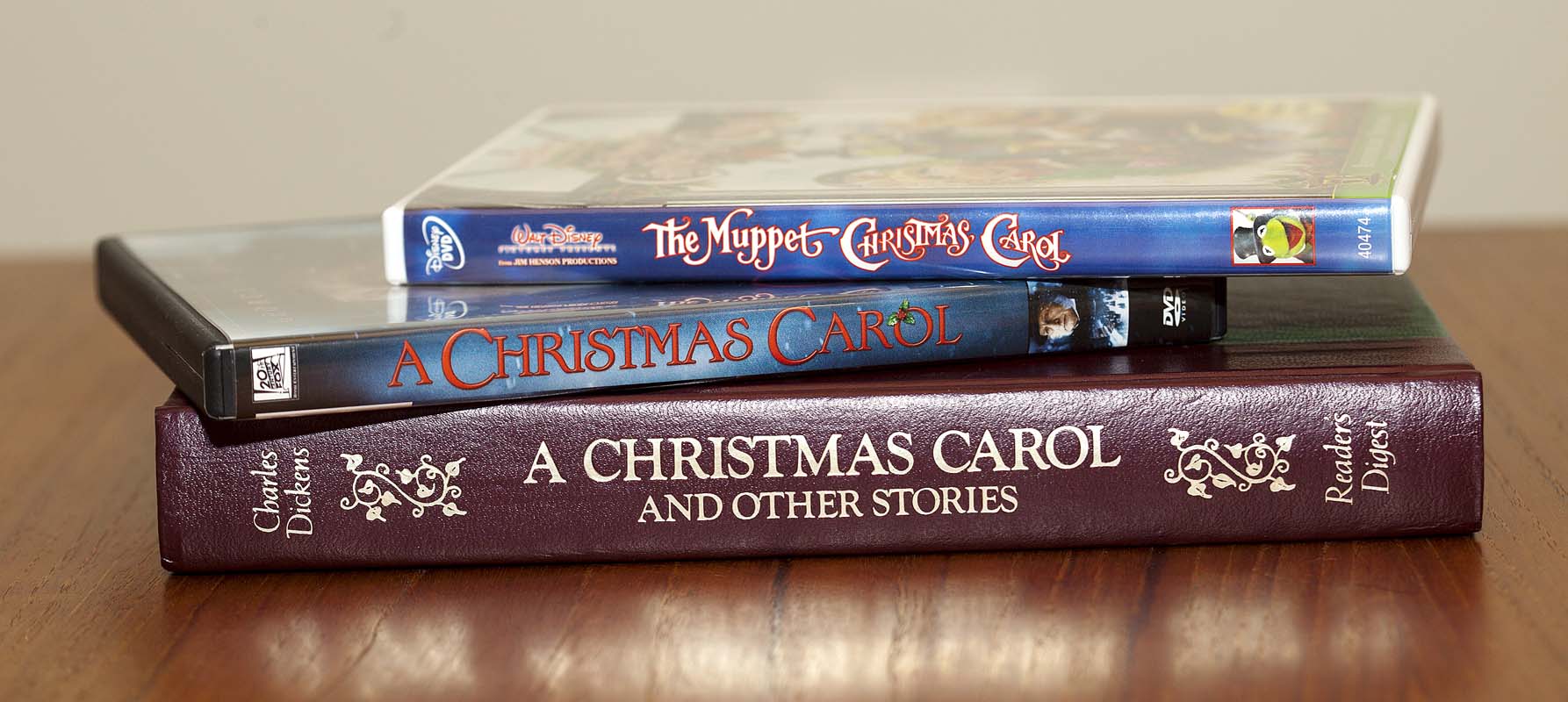
As surely as winter brings snow and cold, skating and tobogganing, so too does Christmas bring light displays, mistletoe, ugly sweaters and holiday traditions.
While most families have their own unique traditions, the manner in which they decorate the tree or baking a family recipe passed down through the generations, one custom that seems to be nearly universal is the sharing of A Christmas Carol by Charles Dickens.
“A Christmas Carol stands as a good call to rediscover those things that are important,” said Chestermere Public Library Librarian Andrea Pflug.
In her opinion, the story’s popularity comes from the focus on the heart of Christmas.
“Which is…reconnecting with one another spending time with loved ones and with family having a generosity of spirit and basically stepping out of the everyday,” said Pflug.
The story tells of a transformative Christmas for miserly money lender Ebenezer Scrooge.
He is haunted first by his dead business partner and then three spirits in an effort to make him turn from a path of selfishness and greed.
A path that would see him suffer in chains after his death was changed to a long life of generosity and compassion for those who are less fortunate, such as his clerk Bob Cratchit.
This story has worked its way in to all aspects of Christmas. The themes and characters can be seen in television, film, theatre and even in advertising such as the popular Canadian Tire ads that ran in the 1980s.
“It’s been adapted to film purposes,” said Shannon Robertson who has studied and taught courses about A Christmas Carol, “it’s been adapted to musical purposes.”
“It has been really well worked through the modern culture,” she said.
Robertson is an Athabasca University Tutor and former instructor at Grant MacEwan University in Edmonton where she taught a class on A Christmas Carol.
Every year it is read, viewed and taken in, in its original form as well as countless adaptations.
The story has become so intertwined with Christmas culture that even people who have never seen or read the story have an understanding of the plot.
“Lots of people understand the word Scrooge to refer to some sort of miserly, negative, stingy kind of character even if they haven’t read A Christmas Carol,” said Robertson.
A Christmas Carol was one of several Christmas stories that author Charles Dickens wrote but it has been the only one to take a hold of society’s collective imagination.
“None of them were as popular as A Christmas Carol,” said Robertson.
Proving its longevity, Dickens’ novella about the redemption of Ebenezer Scrooge through his haunting by the ghosts of Christmas Past, Present and Future, has not been out of print since it was first published in 1843.
The reason that a Christmas Carol has managed to maintain its popularity is that it captures the focus of our day to day lives.
“We live day to day in the grips of the daily needful activities,” she said, “we worry about money, we seek to in some way effect or accomplish our own security.”
These fears can consume the everyday activities of many people and are embodied in the character of Ebenezer Scrooge.
When these worries overtake a person’s life the results and consequences are the same as for Scrooge.
“There is a sense that we will be judged by how it is we have dealt with the…vulnerable among us,” said Robertson.
Like Scrooge as he discovers that his miserly way of life is viewed quite differently by those around him, people today are judged by how they treat others.
“The story of our lives is one that will not only be told by us but it will be told by those people we either blessed or did not bless,” she said.
“That is just as much a part of a legacy, what we fail to do…as what we in fact manage to do,” said Robertson.
She said that in the story, Scrooge is confronted by this fact in an uncomfortable and haunting way.
“These ghosts visit him nightly and he has a chance to consider his impending death,” she said.
As with Scrooge, Robertson believes that people want their legacy to be something that shows mercy, generosity and nobility of spirit.
Which is why this story keeps being passed down to each new generation at Christmas.
Joining in on this tradition, the Chestermere Public Library’s adult book club read A Christmas Carol as their December pick.
“It’s a story we’re all familiar with in all its different forms whether it’s A Muppet’s Christmas Carol or we happen to see it on stage at some point,” said Pflug.
Despite her career, until she chose it for the book club, she had never read it.
“I thought it might be interesting to have a chance to visit the text itself and give people a chance to see if the image of the story in their heads matched what was in the original writing.”
A Christmas Carol is a relatively short story, about 100 pages long depending on the edition.
“A Christmas Carol is consumable in a single sitting,” said Robertson.
The length of the original text has allowed for generally accurate reflections of the story in other forms.
However, she does suggest that the Disney and children’s versions should be considered as being inspired by the original text and not an accurate portrayal.
“The musicals that are performed almost every year…they are really quite faithful,” said Robertson.
Having now read the book, Pflug who is most familiar with the children’s adaptations of the story agrees.
She believes that the fear and terror inspired in Scrooge by the ghosts has been toned down for kids.
This is especially true she feels in the scene where Jacob Marley confronts Scrooge to warn him about what lies ahead of him if he doesn’t mend his ways.
“It’s actually rather haunting the way it’s described,” said Pflug.
Even in the most accurate portrayals, Robertson said that there is a loss of emphasis on Scrooge reflecting on himself as a child.
“It really does ask Scrooge to consider himself as a child, the younger wounded child,” she said.
And how that exclusion, loneliness and separation from the care of his family affected him in later years.
Those formative experiences in Scrooge’s early life are reflected in the man Scrooge grows to be.
Scrooge’s greed has grown out of a fear of want created in him as a child.
“It really is a call to mercy and to generosity for the sake of those who are less fortunate,” said Robertson, “it was in Dickens’ time and it still is now.”
There is a historical context such as the workhouse that no longer exist in western society but many of the themes from the story can still be seen in Chestermere and society today.
“We can get focused on other things, on the day to day concerns and how easy it is to ignore or scoff at Christmas,” said Pflug.
It is too easy to focus on the shiny extras as Pflug puts it; the decorations and trappings of Christmas instead of focusing on what the true meaning of Christmas is, people and connections.
This is something that she tries to foster through the library book club.
The club meets once per month to discuss their chosen book.
“Just something we can explore together,” she said.
The books are chosen by Pflug and are based around the feedback of the members and what they want to read.
“Part of the joy of reading is sharing the experience with other people,” said Pflug.
The club provides a venue for people to discuss the books they are reading and the books that they enjoy.
The club is open to anyone to join. For more information go to www.chestermerepubliclibrary.com.








